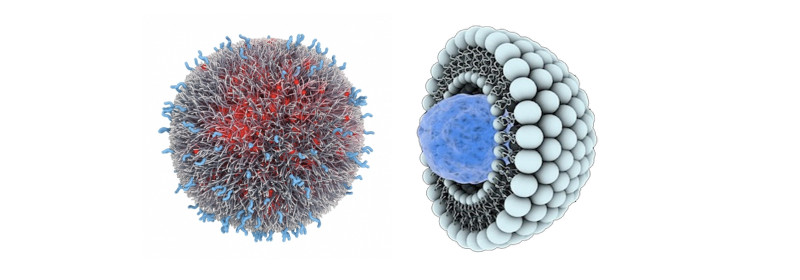Nanocapsules and radiosensitising nanoparticles will optimise the fight against cancer cells by minimising the effects on healthy cells
Ferran Guedea, professor of Radiation Oncology at the University of Barcelona, director of Radiation Oncology of the Catalan Institute of Oncology and full academician of the Royal European Academy of Doctors-Barcelona 1914 (RAED) has made with the specialist Inés Guix the study “Nanotecnología frente al cáncer” (Nanotechnology against cancer), which will be published in the next issue of Tribuna Plural, the scientific journal of the RAED.
Guedea and Guix touch on two aspects of nanomedicine that have already proved effective in the fight against cancer: nanocapsules for the administration of drugs and radiosensitizing nanoparticles, in addition to other applications of nanotechnology and nanomedicine in development such as nanorobots, phototherapy, nanomaterials for the calculation of dosimetries in vivo or nanoparticles presenting antigens. The researchers point out how the classic drugs used in chemotherapy, once they reach the bloodstream, are distributed systemically throughout the body and, instead of attacking exclusively the tumour, they also damage the healthy cells that proliferate the most. The nanocapsules, however, manage to administer the chemotherapeutic agents in greater quantity to the neoplastic cells than to the healthy ones, thus greatly reducing their toxicity.

Dr. Ferran Guedea Edo
“The strategies that are used to create so-called selective nanocarriers, capable of acting specifically on cancer cells, are multiple and very diverse, some nanocapsules are coated with antibodies against tumour antigens, so that they only adhere and are endocytosed by the neoplastic cells that express it other nanocarriers are chemosensitive to pH or temperature and, when they come into contact with acidic media exceeding 38ºC, which is a typical characteristic of tumour microenvironments, they fragment and release the active drug. Nanocapsules capable of responding to ultrasounds have been designed in such a way that, when applied to the area of the body where the tumour sits, on the surface of the nanocarriers pores are formed that allow the exit of the chemotherapeutic agent in said location”, says the study.
Radiation therapy, on the other hand, also fails to avoid damaging healthy organs even though cancer cells are more photosensitive. In this field, the radiosensitizing nanoparticles, formed by polymers of elements with a high atomic number, are able to greatly expand the therapeutic window of radiotherapy and are fixed to the cancer cells just like the nanocapsules. Guedea and Guix also point to nanorobots as a future mechanism capable of exponentially improving the fight against cancer.





